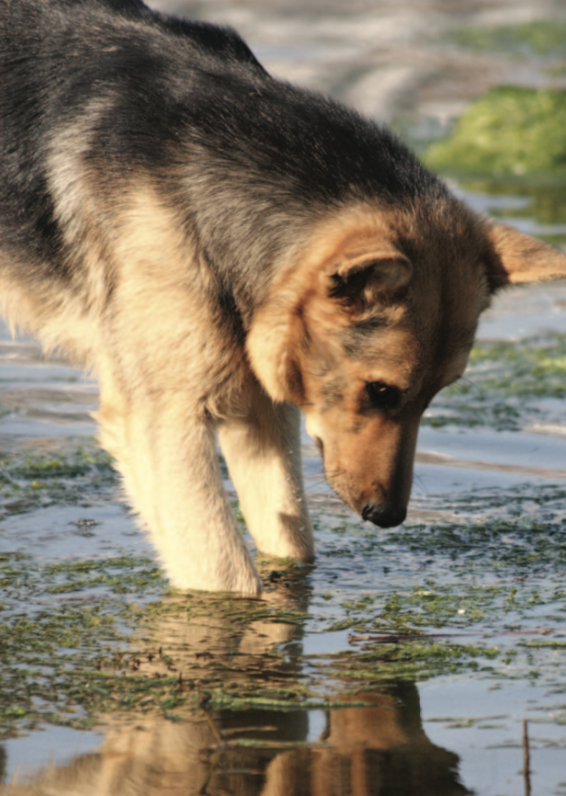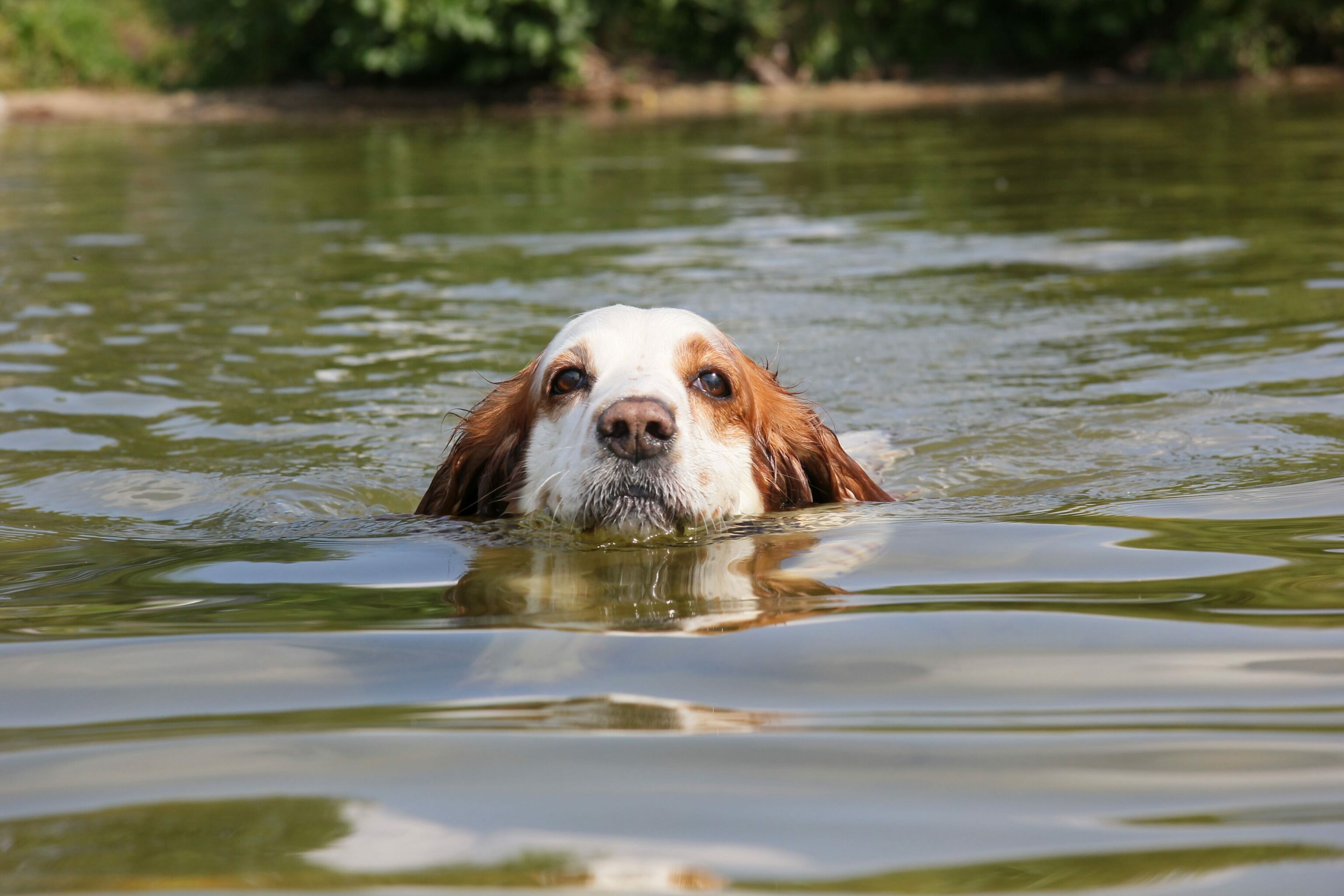What you need to know about Harmful Algal Blooms.
By AMY SCARONI, PH.D.
If you were too nervous to let your dog swim in local waterways this past summer, you weren’t alone. With news reports linking dog deaths to harmful algal blooms (HABs) in neighboring states, many of us exercised caution when deciding whether or not to let our dogs cool off in the water.

What are HABs?
Unfortunately, there is no easy way to identify HABs by sight, but there are factors to look for that can help you avoid them.
Algae and cyanobacteria (often called blue-green algae) are tiny plant-like organisms that occur naturally in our waterways— both fresh and saltwater. Problems arise when the weather heats up and runoff from rainfall flushes excess nutrients (from things like fertilizers, septic systems, and pet waste) into waterways.
This can stimulate the growth of algae, which rapidly multiply, creating an algal “bloom.” If you’ve seen a pond or lake covered in green scum, you have seen an algal bloom. These are more likely to occur in slow-moving, stagnant waterways, particularly in the summer and early fall.
When the algae die and begin to decompose, this reduces the amount of oxygen in the water and can harm fish and other aquatic life. However, when some species of algae die, they release a toxin into the waterway that can affect any animal or human that is exposed.

Are HABS Always Harmful?
You can’t tell if an algal bloom is harmful just by looking at it, and in some cases the algae may stay below the water’s surface and not be visible from land. There are some private labs that can test for HABs, but many waterways and small water bodies are not routinely monitored for HABs.
Pay attention to any swimming advisories issued by the South Carolina Department of Health and Environmental Control (SC DHEC). The best way to avoid blooms is to err on the side of caution and keep your dog out of stagnant waterways in the summer, particularly after heavy rains.
Protecting Your Dog
Dogs often drink water while they are swimming or wading, which can expose them to toxins if there is a harmful algal bloom present. Sometimes dogs are even attracted to the smell of algal scum and may try to eat algal mats that have washed up on shore.
They can also be exposed by splashing around or licking their fur after they exit the water. If you suspect that your dog may have come into contact with a HAB, rinse them thoroughly with fresh water as soon as possible.
Cyanobacteria produces a toxin that quickly causes liver failure, so it is important to seek help immediately if your dog has been swimming and suddenly shows signs of weakness, excessive drooling, labored breathing, tremors, or seizures.
Do’s and Don’ts
- Don’t let your dog swim in waterbodies that have surface discoloration (often green, or blueish-green, but sometimes brown or red), scum, or mats of algae.
- Do rinse your dog after swimming.
- Do bring plenty of clean, fresh water for your dog to drink.
- Do report suspected HABs to the South Carolina Department of Health and Environmental Control.
- Don’t leave pet waste on the ground where rainfall can transport the nutrients downstream. Always pick it up and dispose of it in the trash.
- Don’t throw your grass clippings on the street, down the storm drain, or into a pond; this will introduce nutrients into waterways that can promote algal growth.
- Do get your soil tested at your local Clemson Extension office and follow recommendations for fertilizer use. Using less fertilizer means less nutrients will end up downstream.
HOPE ON THE HORIZON?
Chippewa Lake, a small lake in Northeast Ohio, became the first in the United States to try new technology to combat HABs.

Lake GuardTM is a copper-sulfate modified product developed by the Israeli company, BlueGreen Technologies.
This scientifically developed product is dispersed over the water surface, where it slowly dissolves, killing and weakening the cyanobacteria until other desirable algae forms are free to grow and return the lake to its natural balance.
According to Chippewa Lake’s “Save the Lake Coalition,” after Lake Guard’sTM August 2019 application, scientific readings have fallen to record lows, from August through December. All this was achieved with no fish kills and no impact to flora or fauna.
Dr. Amy Scaroni is an Assistant Professor of Water Resources at Clemson University. She lives on James Island, SC with her rescue dogs Rosie and Charley.





